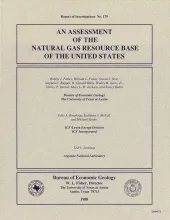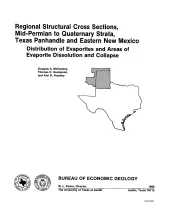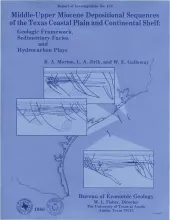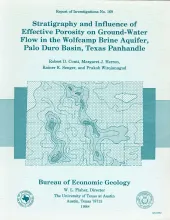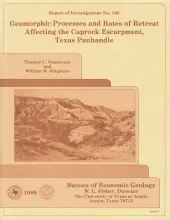Natural gas in the United States consists of proved reserves in known reservoirs, of inferred reserves and undeveloped resources within these reservoirs, and of undiscovered resources. Other than proved reserves, all volumes of future natural gas supply are estimates based on information derived from past and current experience in gas production and reservoir development. Even proved reserves are subject to periodic revision.
The Palo Duro Basin of the Texas Panhandle and eastern New Mexico contains bedded Permian salts of sufficient thickness and depth for the basin to be considered as a potential site for long-term storage and isolation of high-level nuclear waste. Salt (primarily halite) is a desirable host rock because of its low permeability, high thermal conductivity, low moisture content, and high gamma-ray shielding properties (Johnson, 1976b). A major concern that was addressed during the waste isolation study of the Texas Panhandle region is the long-term integrity of the bedded-salt host rock.
Middle-upper Miocene depositional sequences of offshore Texas represent the last regionally significant influx of terrigenous elastic sediments into the western Gulf Coast Basin.
In the Palo Duro Basin, the Wolfcampian Series (lower Permian) overlies Pennsylvanian (primarily Virgilian) strata and underlies the Wichita Group (Leonardian). Tectonic activity from late Pennsylvanian through early Wolfcampian deposition included basement subsidence that resulted in localized basin development.
The interaction of geomorphic and ground-water processes has produced the Caprock Escarpmentthat bounds the eastern margin of the Southern High Plains in the Texas Panhandle. Spring sapping,slumping, and piping at the surface and salt dissolution in the subsurface are some of the many erosionalprocesses affecting the escarpment.Substantial thicknesses of bedded Permian salt (halite) have been dissolved from the Salado, SevenRivers, San Andres, and Glorieta Formations beneath the Caprock Escarpment and the Rolling Plains,east of the escarpment.


